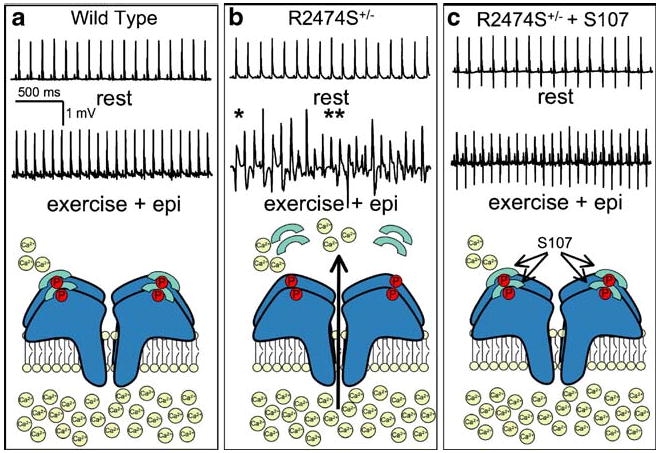Fig. 4.

Fixing sarcoplasmic reticulum (SR) Ca2+ leak by targeting RyR2–calstabin2 interactions. The traces in (a), (b), and (c) are representative telemetric electrocardiogram (ECG) recordings from wild type, R2474S heterozygous (R2474S+/−) mice, and R2474S+/− mice that were treated with S107. Mice were subjected to a stress protocol consisting of a treadmill exercise followed by epinephrine injections. Wild type mice did not exhibit irregular ECGs under these conditions, while a majority of R2474S+/− mice exhibited severe ventricular tachycardias and sudden cardiac death (single asterisk, bidirectional VT; double asterisk, polymorphic VT). Treatment with S107 largely prevented these effects as shown by the regular ECG. Below the traces are cartoons depicting the condition of the RyR–calstabin2 complex under each experimental condition. Data were from Lehnart et al. [65] and reprinted with permission from the American Society of Clinical Investigation
